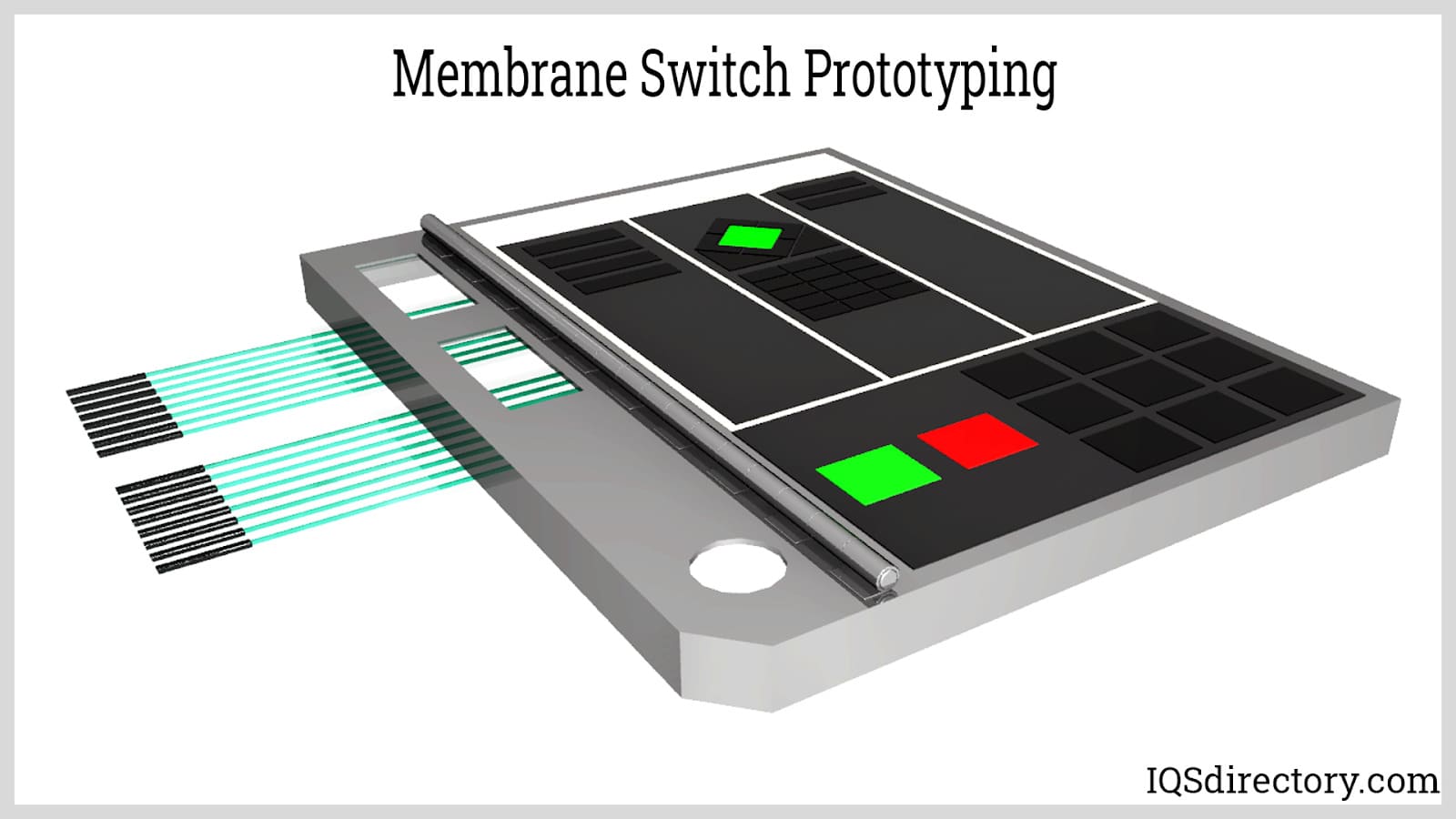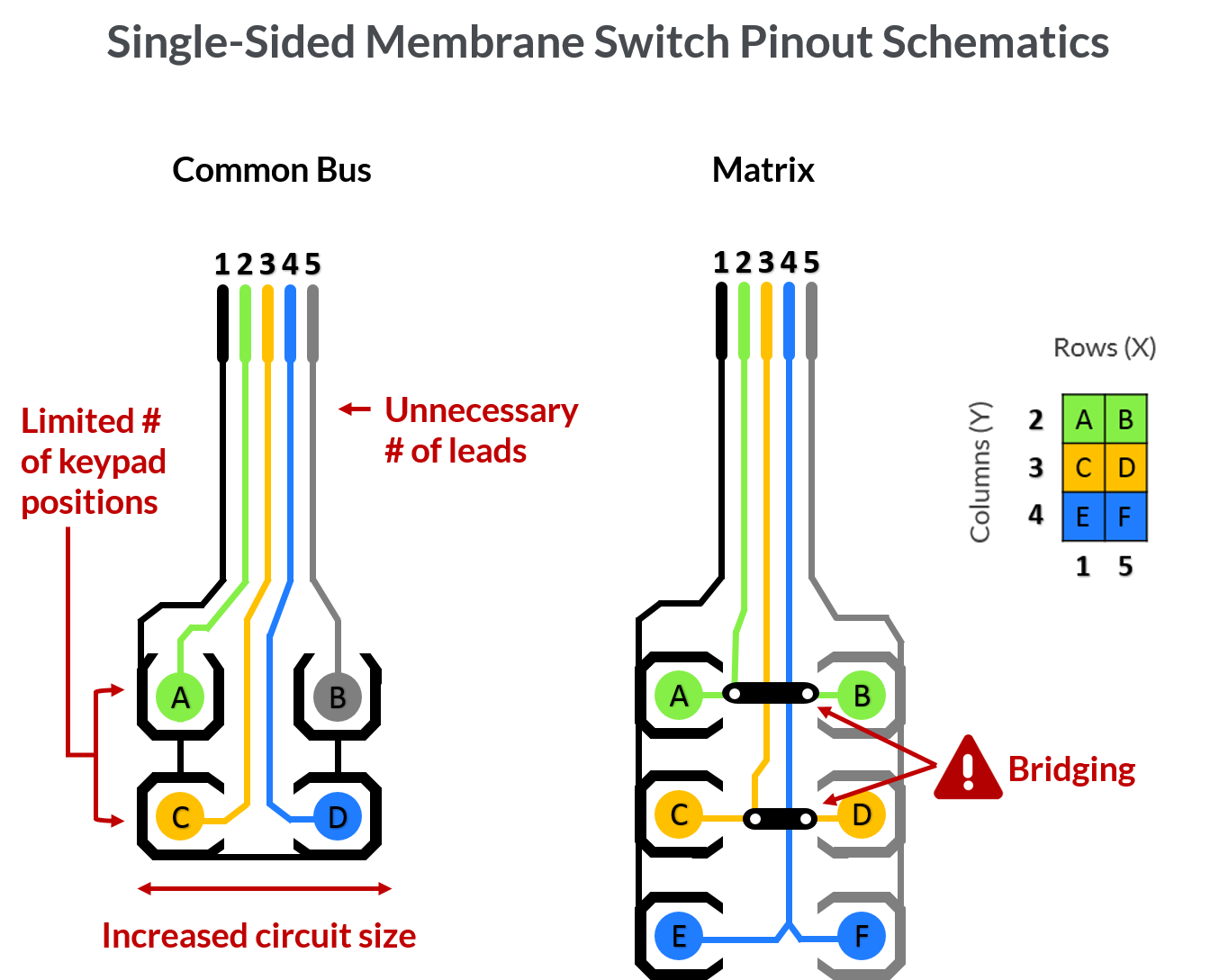Discover Exactly How a Membrane Switch Boosts Sturdiness and Capability in Devices
Discover Exactly How a Membrane Switch Boosts Sturdiness and Capability in Devices
Blog Article
Just How Membrane Layer Switches Over Contribute to the Longevity of Electronic Control Panels
Membrane switches play a critical role in enhancing the sturdiness of electronic control board, primarily via their multi-layered building which offers efficient defense against environmental aspects such as moisture and dust. This design not only reduces the danger of circuit damage and rust but likewise advertises convenience of maintenance due to its seamless surface. In addition, the absence of moving parts substantially reduces the chance of mechanical failures, making membrane switches perfect for demanding applications. Nevertheless, the effects of these features prolong past mere security, increasing concerns about their more comprehensive influence on capability and individual experience.
Meaning of Membrane Buttons

Membrane layer buttons are created to be slim and light-weight, making them appropriate for applications where area is restricted. They can be made in numerous shapes, sizes, and shades, supplying flexibility in design that satisfies aesthetic and practical demands. Additionally, membrane buttons can incorporate various modern technologies, such as tactile comments and LED indicators, boosting customer experience.
As a result of their building and construction, membrane buttons are usually immune to dirt, dampness, and general wear, contributing to their durability popular atmospheres. Their smooth layout not just facilitates easy cleaning but also lessens the risk of mechanical failure, making them a recommended option for makers looking for dependable interface in their electronic control board.
Security Versus Environmental Elements
The layout of membrane changes naturally offers a degree of protection against various ecological elements, which is important for keeping functionality in tough conditions - Membrane Switch. These buttons are normally built with layers of flexible materials that secure inner parts from moisture, dirt, and impurities. By encapsulating the wiring, membrane switches decrease the risk of brief circuits and rust, which can considerably hinder performance
Additionally, the use of durable adhesives and sealants throughout production enhances their resistance to ecological challenges. Membrane layer switches can endure direct exposure to chemicals and solvents, making them appropriate for industries such as food handling and health care, where health and sanitation are extremely important. Their seamless surface area design also prevents the buildup of dust and microorganisms, helping with less complicated cleaning and upkeep.
Temperature variations are one more environmental problem, and membrane buttons are crafted to work effectively across a variety of temperatures (Membrane Switch). This flexibility ensures that control board stay functional in various settings, from commercial settings to consumer electronic devices
Influence On Individual Communication
User interaction with digital control panels is significantly influenced by the style and capability of membrane buttons. These buttons supply a responsive interface that boosts the overall individual experience, allowing for instinctive navigating and control. Their receptive nature guarantees that individuals get prompt comments upon activation, which is critical for tasks requiring precision and efficiency.
Furthermore, the smooth surface area of membrane layer switches over facilitates easy cleaning and maintenance, promoting user self-confidence in the dependability of the user interface. This tidiness is especially crucial in atmospheres where health is paramount, such as clinical or food handling setups. In addition, the small and lightweight layout of membrane layer switches over adds to the visual charm of control panels, motivating customer involvement with a contemporary and sleek look.
Furthermore, the integration of visual elements, such as published symbols and backlighting, assists users quickly identify features, lowering the finding out curve connected with new tools. As an outcome, customers can run gadgets more effectively, bring about boosted efficiency and fulfillment. In recap, membrane layer switches play a critical role in boosting individual interaction by combining capability, appearances, and simplicity of use, ultimately causing enhanced functional effectiveness.
Layout Adaptability and Modification
Design adaptability and customization are essential elements of membrane layer buttons, enabling producers to customize digital control board to particular applications and individual needs. This flexibility enables the assimilation of various style components, such as shades, graphics, and appearances, which can enhance the visual appeal and customer engagement of the control board.
Membrane buttons can be personalized in size and form, suiting a large range of devices and applications, from commercial equipment to consumer electronics. This helpful site convenience makes certain that makers can develop intuitive interfaces that line up with customer assumptions and operational needs. In addition, the ability to incorporate one-of-a-kind functions such as backlighting or tactile responses better boosts functionality, enabling explanation a much more interactive experience.
In addition, the manufacturing process for membrane layer switches over sustains the rapid prototyping of styles, making it possible for makers to iterate and fine-tune their ideas swiftly. This capacity not just increases the development timeline yet also ensures that the final product fulfills particular practical and aesthetic criteria.

Cost-Effectiveness and Longevity
Cost-effectiveness and longevity are substantial benefits of membrane layer buttons, making them an eye-catching option for manufacturers and end-users alike. These buttons are typically cheaper to create than typical mechanical buttons, largely because of their simplified manufacturing procedures and the minimized variety of elements needed. This cost benefit expands not only to initial production but additionally to lasting operational expenses, as membrane layer switches frequently call for find out here now less upkeep and have a lower failing price.
In addition, the durability of membrane layer switches contributes to their total value. Constructed from resilient materials, they are immune to environmental variables such as wetness, dust, and chemicals, which can bring about early wear in various other switch kinds. The absence of relocating parts decreases mechanical failure, enabling membrane changes to maintain performance over extended periods.
This sturdiness is specifically advantageous in applications requiring regular efficiency under demanding conditions, such as medical tools and industrial devices. Inevitably, the combination of cost-effectiveness and longevity makes membrane changes a financially practical choice for makers, providing reliable solutions that endure the examination of time while optimizing monetary factors to consider.
Conclusion
In conclusion, membrane layer buttons dramatically boost the durability of digital control panels via their durable building and safety functions - Membrane Switch. Overall, membrane layer switches over stand for a reputable and cost-effective choice for improving the long life and performance of electronic control systems.
Report this page